1998

Front Porch Forum, Seattle, WA 1998
Partners:
The Seattle Times
KCTS
KPLU-FM
KUOW-FM
Following up on the 1997 mock trial on growth in the Puget Sound, the partners confronted longstanding assumptions about the issue with a series called, “Growth: Enough already?”
The mock jury in the 1997 “Puget Sound 2020” project had startled the partners by ignoring the common wisdom about growth – that it can’t be avoided; only managed. Participants said they favored stopping growth altogether. So the partners decided to explore whether that was really possible.
Beginning May 17, 1998, the partners produced stories exploring five broad themes: 1) Is growth inevitable? 2) Does growth pay for itself? Should it? 3) The impact of government economic development incentives. 4) Immigration and growth. 5) The birth rate and growth. Each installment invited reader feedback, which was published in subsequent issues or broadcasts.
In October, the partners gathered 30 demographically representative citizens from the region to discuss policy alternatives for managing growth. Three county Executives observed the session and offered comments afterward. Reporters included the citizen and politicians’ comments in a final wrap up report in the Times, Nov. 22 and on radio and television Nov. 23.
Contact:
David Boardman
Assistant Managing Editor
The Seattle Times
PO Box 70
Seattle, WA 98111
Phone: (206) 464-2205
Email: dboardman@seattletimes.com
Marion Woyvodich
1138 North 82nd Street
Seattle, WA 98103-4405
Phone: (206) 522-5754
Fax: (206) 528-5528
Email: MWoyvodich@aol.com
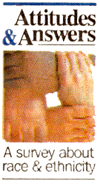
Race Relations in El Paso, El Paso, TX 1998
Partners:
In this largely Hispanic town on the Mexican border, the media partners opened a conversation on race, immigration and language with a series built around a poll of 1,008 residents in English and Spanish.
The first step the partners took was to convene a panel of academic and civic leaders, who met almost weekly through December and January of 1997, crafting the language of the poll’s questions. For example, a question on bi-lingual education was changed from “Do you favor ending bi-lingual education?” to “Do you support bi-lingual education?”
The poll was conducted in February 1998 by interviewers who spoke both English and Spanish. The results were reported in an eight-part series called “Attitudes and Answers,” that began May 10, 1998. The poll found areas of agreement between Anglos and Hispanics but showed a major rift on the issues of affirmative action (most Hispanics supported it while most Anglos opposed it) and language (79 percent of Anglos favored making English the official language of the United States while only 42 percent of Hispanics felt that way).
On May 13, the partners held a town hall forum attended by 160 people, who agreed that though relations between Anglo and Hispanic El Paso residents are generally good, there lingered a subtle racism that was worthy of examination and discussion. Bob Moore, now executive editor, said both the poll and the forum provided the framework for people to feel comfortable discussing the issues.
Contacts:
Robert Moore
Executive Editor
El Paso Times
PO Box 20
El Paso, TX 79999
Phone: (915) 546-6145
Email: bmoore@elpasotimes.com
Kevin Lovell
General Manager
KVIA-TV (ABC)
4140 Rio Bravo Drive
El Paso, TX 79902
Phone: (915) 496-7777
Email: kevinl@kvia.com

A Collision Course, Idaho Falls, ID 1998
Partners:
Idaho Falls Post Register
Lewiston Morning Tribune
Idaho Spokesman-Review
Idaho Public Television
KTVB (NBC, Boise)
This unique partnership sparked a statewide conversation on Idaho’s runaway prison spending with “Collision Course,” a five-part series that revealed the hidden cost of building more jails and engaged hundreds of people in the search for alternatives.
As a point of comparison, the partners chose declining state spending on higher education to illustrate how escalating prison spending was affecting Idaho’s quality of life. A poll of 804 residents in October 1997 showed 73 percent disagreed with the state’s spending priorities. A series of focus groups in six communities explored the reasoning behind the opinions the poll surfaced.
Each paper focused on one part of the overall story. The Spokesman-Review, for instance, coordinated polling and took the lead role in writing the kick-off segment while the Statesman created a database on prison population trends and wrote the bulk of prisoner profiles and articles on higher education. All four papers ran the series from Nov. 16 to 24, 1997. KTVB produced a four-part series of stories that week. Idaho public television broadcast a live town hall meeting Nov. 24.
The series prompted a noticeable change in elected officials’ approach to the issue, which had been dominated by law-and-order, lock-’em-up rhetoric. After the series, legislators explored sentencing reform proposals that would reduce the number of non-violent offenders incarcerated.
The partners seized the momentum of the project to launch “Idaho Speaks Out,” a civic approach to their 1998 election coverage. A statewide poll in May, the largest ever taken in Idaho, revealed four major issues-federal debt, health care costs, taxes and schools-as voters biggest concerns. A second poll in September refined the findings, showing that education was the issue that would most influence voter decisions. The partners shared the information and analysis; then each partner used it to develop stories tailored to local readers and viewers.
“Collision Course” shared in the 1998 Batten Award.
Contact:
Dennis Joyce (formerly with Statesman)
Asst Managing Editor
Arizona Daily Star
PO Box 26807
Tucson, AZ 85726-6807
Phone: (520) 573-4224
Fax: (520) 573-4200
Email: djoyce@azstarnet.com
Dean Miller
Managing Editor
The Post Register
P.O. Box 1800
Idaho Falls, ID 83403
Phone: (208) 542-6766
Email: dmiller@idahonews.com
![]()
The New City, San Francisco, CA 1998
Partners:
San Francisco Examiner
Maynard Institute for Journalism
After months of ground level reporting, the paper published the first story in the series on April 26, 1998. It was a 175-inch, front page centerpiece that jumped into four inside pages. That first installment also launched a feature called “First Person” that gave people a chance to talk in their own voices. Over the course of the year, the paper published 19 major stories in the series, plus sidebars and “First Persons.”
Editors worked hard to gain strong staff support for the project, even among reporters who didn’t work on it directly. One tool was The New City Tour, a bus tour of some of the city’s more obscure neighborhoods with Max Kirkeberg, a San Francisco State University geographer. More than half the staff took the tour.
Another strategy was to have every department contribute stories to the series, leading to some of the most interesting features, such as a sports department report on cricket, hurling and other exotic, new sports being played in San Francisco’s public parks. The paper had originally envisioned a one year project but felt compelled to continue the series. Stories under “The New City” sig continued to run until the paper was sold in 2000.
Contact:
Sharon Rosenhause (former Managing Editor, San Francisco Examiner)
Managing Editor
Sun-Sentinel
200 E. Las Olas Blvd
Fort Lauderdale, FL 33301
Phone: (954) 356-4602
Email: srosenhause@sun-sentinel.com
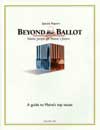
Beyond the Ballot: Maine’s Issues in the New Millennium, Portland, ME 1998
Partners:
Portland Newspapers
Central Maine Newspapers
WGME-TV (CBS)
Maine Public Television
“Beyond the Ballot” not only dramatically changed the way major media in coastal Maine covered the statewide 1998 elections, it set the course for their coverage of politics and government for the four years that followed.
Beginning with a poll of 1,106 Maine residents in the summer of 1998, the partners let voters decide which issues determine which issues candidates should address and the partners should cover. The poll uncovered a divide between prosperous southern Maine, where taxes and sprawl were most troubling, and the rest of Maine where jobs were the major concern. The partners then organized and covered a series of six day-long meetings in different areas of the state to probe deeper into the findings. Some 1,500 citizens contributed their input to the partners’ understanding of the issues. Other media also took an interest in the citizens’ views. Daily papers in Lewiston and Bangor, along with more than a dozen weeklies and local radio stations, covered the forums or wrote about the project.
The citizens’ views and issues guided the partners’ election coverage through the fall and, when the election was over, the partners published a book. “Beyond the Ballot: Maine people on Maine’s future,” outlining the issues of greatest concern and proposed legislative solutions to problems, was sent to the governor, state legislature, local leaders and public libraries. The book also became a benchmark by which to assess state government, with follow-up reporting on the progress the governor and legislature were making in addressing the citizens’ issues.
Contact:
Jeannine A. Guttman (former Executive Editor, Portland Newspapers)
Editor and VP
Portland Press Herald
PO Box 1460
Portland, ME 04104
Phone: (207) 791-6310
Email: jguttman@pressherald.com
Jessica Tomlinson
Online Community Organizer
MaineToday.com
50 Monument Square
Portland, ME 04101
Phone: (207) 822-4072
Fax: (207) 879-1042
Email: Jessica@mainetoday.com

The Election Connection, Los Angeles, CA 1998
Partners:
Orange County Register
Riverside Press Enterprise
KCET-TV (PBS)
KCRW-FM in Santa Monica
KPCC-FM in Pasadena
Orange County News Channel
The partners, who’d been working together since the 1996 “Voice of the Voter” project, called their third joint effort “The Election Connection” to emphasize the goal of helping voters feel connectedto the electoral process. The project began with a poll of 600 voters to determine which issues were their highest priorities. Reporters from each news organization then spoke with respondents for stories on the poll and on each issue. Coordinated coverage among all the partners began March 16, 1998 with an overview of poll results. Issues stories ran every two weeks through the June 2 primary.
The partners also coordinated coverage of the financing behind four major initiatives on the 1998 ballot. For example, their stories revealed that most of the support for a ballot measure that would restrict the use of union dues came from conservative groups outside the state. The measure was defeated. Opposition to another initiative, allowing gambling on Native American reservations, was largely financed by Nevada casino owners. That measure passed.
In attempting to stimulate public conversation about the election, the partners brought together a panel of politically and ethnically diverse Southern Californians to watch and discuss the debate between leading gubernatorial candidates. They also sponsored a debate between candidates for state attorney general. KCBS-TV aired a weekly Election Connection talk show on Sunday mornings and KCET-TV hosted a one-hour special featuring a live studio audience on a ballot issue that would eliminate bi-lingual education in California schools.
A second poll conducted after the primary was the first to show Democrat Gray Davis with a double-digit lead over his opponent in the gubernatorial race and the first to show Republican congressional candidates in jeopardy because of a public backlash against GOP efforts to impeach President Clinton.
The partners considered their Web site, electionconnection.org, one of their major successes. The site received 158,000 visits between March and November 1998, with a spike of 50,000 visits for November.
Contacts:
Dennis Foley (former Chairman, The Election Connection, a project of the Southern California Voices of the Voter coalition)
County Government Reporter
The Orange County Register
PO Drawer 11626
Santa Ana, CA 92711-1626
Phone: (714) 285-2862
Email: dfoley@ocregister.com
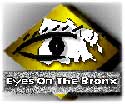
Multi-lingual News Programming, BronxNet, Bronx, NY 1998
Partners:
BronxNet Community Cable
The Bronx Journal
The Multilingual Journalism Program at Lehman College of the City University of New York
In their ongoing and multifaceted effort to give voice to the Bronx’s underserved ethnic communities, BronxNet and the Multilingual Journalism Program at Lehman College launched a multilingual news show and a series of special programs on issues of particular importance to the borough’s residents.
“News 67” was launched in the spring of 1998 in Italian and Japanese. By the fall, a French edition of the weekly television newsmagazine was added and, later, a Korean edition. BronxNet specials included a live, interactive call-in on the future of Northern Ireland in May 1998. In the fall, the partners televised a live discussion of the impact of AIDS on college-age people in a broadcast that linked all 17 campuses of the City University of New York. “Social Security and Generation X,” a month later, linked the campuses with participants in Puerto Rico. For both broadcasts, translators handled questions and comments in Spanish on the air.
Bronx public schools began using Lehman’s student-published newspaper, The Bronx Journal, launched with earlier Pew support, for its Newspaper in Education program, which nearly doubled its circulation of 7,000 to 13,000. This prompted the paper to pilot a children’s section, supported through later Pew funding.
Contact:
Jim Carney
Executive Director
Bronxnet- Lehman College
Carman Hall Room C-4
Bronx, NY 10468-1589
Phone: (718) 960-1180
Email: jcarney@bronxnet.com
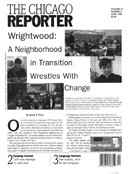
Special Report on Wrightwood, Chicago, IL, 1998
Partners:
The Chicago Reporter
WBEZ-FM
WNUA-FM
The Pew Center provided additional funding to allow the investigative monthly to complete its portrait of racial change in the Chicago neighborhood of Wrightwood. The story appeared in the April 1998 issue. For more details, please see Year Four (1997) projects.
Contact:
Laura S. Washington
3750 Lake Shore Dr., Apt. 8-C
Chicago, IL 60613
Phone: (773) 327-4025
Email: lauraswashington@aol.com

Changing Tides, Aberdeen, WA 1998
Partners:
The Daily World Channel 20
TCI Cablevision
In year two of their “Changing Tides” project, the partners attempted to bring together citizens and community leaders to craft solutions to the political, economic and environmental challenges the region faced.
A March 1998 mail survey of 130 traditional community leaders – elected officials, educators, union leaders and others – turned up marked differences from an earlier poll of 400 area residents. The survey found traditional leaders more pessimistic than the general public about their ability to solve the region’s problems. They also preferred private-sector solutions while the general public thought government should be more responsible. Four out of five community leaders thought local government represented the people well; less than half the public agreed. While both groups agreed the economy was the top priority, there was no consensus on how to improve it.
A May forum brought the two groups together and surfaced support for dramatic solutions to community problems. Citizens, for instance, said they would be willing to pay more taxes to support a downtown renewal project.
While the project was community-focused, it had a big impact on The Daily World newsroom. As one editor put it, “The key lesson is that we, as reporters, should begin to think of citizens as players… and to make that citizen voice part of our coverage.” The paper built staff training into the project, including a series of brown-bag sessions on civic journalism and a staff retreat to discuss citizens’ voices and lessons learned from the project.
Contact:
Matt Hufman (formerly at The Daily World)
Metro Editor
Las Vegas Sun
PO Box 98970
Las Vegas, NV 89193-8970
Phone: (702) 385-3111
Email: matt@lasvegassun.com
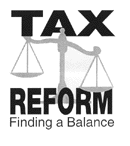
Muncie, IN 1998
Partners:
When Indiana legislators met in 1999 to begin restructuring the state tax system, they had a good understanding of what their constituents thought about the issue, thanks to a booklet called “Hoosiers Talk Taxes,” the culmination of a yearlong project to inject citizen voices into the debate over tax reform.
The first effort in the project was to educate journalists themselves about the complex issues surrounding tax reform. Economics professors from three Indiana universities held a seminar that attracted 20 journalists, in June 1998. The session aired live on WLBC and was broadcast later on cable.
A five-part series, “Tax Reform: Finding a Balance,” ran in The Star Press from Oct. 3 to Oct. 7, 1998. It included the results of a mail survey completed by 223 Muncie area residents, showing property taxes to be by far the most unpopular tax in the state. On Oct. 6, the partners sponsored a public forum, attended by 103 people, including eight legislators, to discuss the results.
The survey results also helped guide a statewide poll of 507 Indiana residents, in late October and November, which showed most Hoosiers favored increasing so-called “sin” taxes on tobacco and alcohol. The survey results and coverage were included in “Hoosiers Talk Taxes,” mailed to the governor and every member of the General Assembly in early 1999.
The issue languished until the summer of 2002, when the governor called the legislature into a special session to resolve the issue. The Assembly ended up changing the assessment system for property taxation and increasing the state income tax and sales taxes on tobacco and alcohol, thus taking the pressure off local property taxes – all measures explored in the 1999 series.
Contact:
Larry S. Lough
Editor
The Star Press
345 South High Street
Muncie, In 47305
Phone: (765) 213-5700
Email: llough@thestarpress.com

PBS’ Livelyhood 1998
Partners:
The Working Group
KQED-TV
Public Radio’s “Marketplace”
The critically acclaimed “Livelyhood” project, a four-part, public television series on the changing nature of work in the United States, used a national poll, town hall-style discussions, the Internet and a specially devised “tool kit” to encourage working Americans to confront and discuss emerging challenges and issues in the workplace. The Pew Center helped to support some of that outreach.
The four, one-hour television shows, which debuted on PBS, Nov. 21, 1997, covered the issues of downsizing, working families, employee ownership and community solutions to workplace problems. By design, the shows were intended not as passive entertainment but as a stimulus to discussion. To that end, the producers worked with other media to create forums for discussion. One tool used was a “Livelyhood Index,” developed from the national poll results, which capsulized the findings in such statements as: “Percentage of working Americans who say they have more than one wage-earner in the household: 62.” Discussion leaders, who included talk-radio hosts, could use the index as a jumping off point to get listener opinion on the issues.
After the “Working Family Values” installment, aired May 29, 1998, the producers worked with KCET-TV in Los Angeles on a town hall discussion of work issues. For the September 1998 broadcast of “Honey, We Bought the Company,” which featured a Maine company, the producers partnered with the University of Southern Maine for a town hall meeting in Portland on employee-ownership issues. The producers also held a roundtable discussion in Oakland. The final installment, “Our Towns,” aired Jan. 12, 1999.
Contact:
Patrice O’Neill
Executive Producer, Livelyhood; Co-Founder
The Working Group
1611 Telegraph Ave., Suite 1550
Oakland, CA 94612
Phone: (510) 268-9675
Email: poneill@theworkinggroup.org

California Campaign Finance Database, Sacramento, CA 1998
Partners:
In the fall of 1998, the California Voter Foundation (CVF) produced the state’s first online database of campaign contributions received by candidates for state office and by ballot measure campaigns. CVF also produced its first annual Online Voter Guide, which received 50,000 visits and 450,000 page views over a six-week period around the Nov. 3, 1998 election.
The first step was to publicize the state’s and the Federal Election Commission’s voluntary electronic filing programs, which allowed candidates to report contributions and expenditures digitally so that interested citizens could view the information through the Internet rather than having to make a trip to the elections office to get a paper copy. Participating news organizations asked every candidate for state office, Congress and U.S. Senate if they would participate in the program. Those who filed voluntarily received a pat on the back in the Online Voters Guide. For those who did not, CVF obtained the paper filings and had student volunteers enter the information into an electronic, searchable database (developed by Compaq labs). Eight of the 16 major-party statewide candidates agreed to file electronically.
The information was incorporated into the popular Online Voters Guide with the debut of a feature called “Follow the Money.” Voters and journalists could view all the contributions to a candidate almost immediately after they were disclosed and CVF published and maintained up-to-date lists of the top 10 contributors to every statewide candidate and ballot measure, providing voters with a quick, easy-to-digest overview of the biggest funders behind each campaign. In all, the site logged 100,000 visits in 1998 and over one million page views. Users wrote thank you notes such as this one: “It is each of our responsibility to be informed voters. Your site is helping ensure that I am in that category.”
Contact:
Kim Alexander
President & Founder
California Voter Foundation
222D Street, Suite 6B
Davis, CA 95616
Phone: (530) 750-7650
Email: kimalex@calvoter.org
Citizens’ Agenda, Rochester NY 1998
Partners:
The Rochester Democrat and Chronicle
WXXI-TV (PBS)
WXXI-FM
WOKR-TV (ABC)
The partners sought to shake up “business as usual” election coverage by engaging citizens in producing a set of grassroots legislative proposals for candidates that would rival the agenda set by special interest lobbyists. “The Citizens’ Agenda” was crafted through a statewide poll, eight forums and two months of weekly meetings by a panel of citizens who finalized the work in a live broadcast two weeks before the election.
The partners launched the process with a poll of 707 New York residents to identify their top issues. Candidates were then asked to take the same poll. Stories on Sept. 13 and 14, 1998 compared the two sets of answers. A series of eight town and neighborhood meetings, attracting a total of more than 100 people, gave the partners additional insight into local concerns and what voters wanted to see happen in the state Senate and Assembly after the election.
The partners ran a series of stories on the top issues: Taxes and the state budget, health care, crime, education and jobs. At the same time, they convened a panel of 16 voters, balanced to reflect accurately their viewing, listening and readership area. Using poll data and personal experience, the panel met weekly for two months to work on their agenda. Then, on Oct. 21, 1998, WXXI-TV aired a live 90-minute special in which the final document was debated and produced. The paper published the resulting agenda and mailed it to every state legislator in Albany.
In December – after the election but before the legislature began meeting – the partners sponsored two meetings between the citizen panel and the local delegation to discuss the citizens’ proposals.
Contact:
Gary Walker
VP of Television
WXXI-TV
280 State St – PO Box 30021
Rochester, NY 14603-3021
Phone: (585) 258-0241
Email: gwalker@wxxi.org
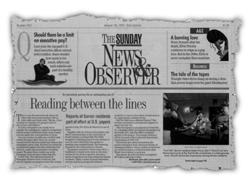
Project Reconnect, American Society of Newspaper Editors 1998-99
Partners:
News & Observer, Raleigh, NC
The Gazette, Colorado Springs, CO
Fredericksburg Freelance Star, Fredericksburg, VA
The State, Columbia, SC
“Project Reconnect” teamed four daily newspapers with four journalism schools to close the distance that had grown between the papers and certain groups of readers (or ex-readers). In Raleigh, The News and Observer wanted to reconnect with working-class readers. In Colorado Springs, The Gazette sought to lure back business readers. The Fredericksburg Freelance Star wanted to be more relevant to African-American readers and The State in Columbia wanted to reconnect with readers who had strong religious affiliations.
Each team took a different approach and each had different results. One common element, though, was that each met with focus groups of readers in the disaffected category and listened non-defensively for ways in which they could better serve those readers without compromising the paper’s overall quality.
The Gazette took the most radical step of the four, launching a whole new Monday business section, “Inside Track,” and hiring more business reporters, based on the suggestions of its focus group of business readers.
The News and Observer ran a major project on the blue-collar town of Garner, on Aug. 10, 1997, that included an entire page written by Garner residents. The project showed the paper could accurately reflect the ideas and concerns of working class readers, and the paper pledged to do more to get such stories in the paper on a regular basis.
Rather than a major project, The State took a more systemic approach to reconnecting with religious readers. Focus-group participants, who described themselves as “devoutly religious,” objected to being lumped together with labels such as “right-wing Christians.” The paper stopped using those labels and began giving more specific information about religious people covered in the news.
Only the Freelance Star saw a conflict between its basic mission and the focus-group suggestions for reconnecting with African-American readers. Focus-group participants objected to the paper’s frequent stories about Civil War battles fought more than a century earlier, but editor Ed Jones was reluctant to scale back such coverage, viewing it as a key interest of most readers. Jones said the project convinced him, though, he needed to add stories about African-American history.
Contact:
Judy VanSlyke Turk
Dir, Schl of Mass Communications
Virginia Commonwealth University
P.O. Box 842034
Richmond, VA 23284-2034
Phone: (804) 828-2660